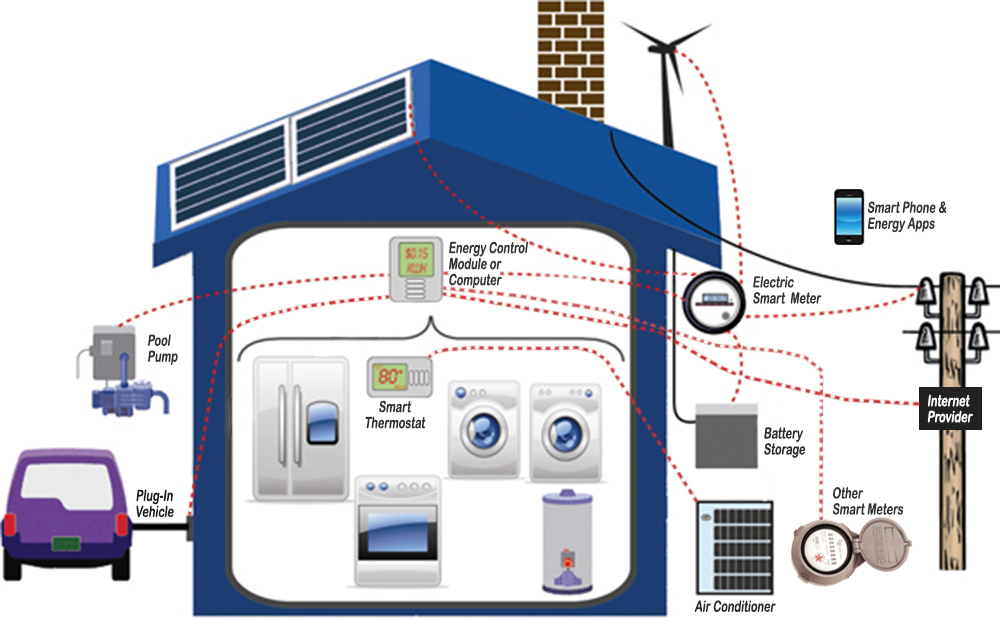Cloud based consumer home automation for electricity, water, & gas management
EnergyCite LTD
Executive summary:
Today there is a convergence of two major trends. These are “Smart Energy” and Home Automation. “Smart Energy” is delivered to electricity customers through the new “Smart Meters.” Utility companies currently support a nationwide installed base of 60 million “Smart Meters” which is expected to grow to over 100 million units by 2020. These meters provide critical data to maximize the value of home automation systems and related IoT devices. The effective integration of the utility smart meter and in-home devices is enabled by an internal wireless radio link embedded in the smart meter. Furthermore, new gas and water meters support remote reading and may be integrated into the smart home to help conserve gas and water. A business opportunity exists for the management of technology, the enabling of consumer functionality, and the licensing of key patents covering this integration. Strong recurring revenues can be generated based on the utility – customer relationships of tens of millions of consumer accounts.
Smart Energy:
Smart Energy is a term used by the utility industry and its suppliers to describe electricity generated and delivered over the Smart Grid which takes advantage of modern digital electronic systems to conserve electricity generation resources by limiting peak demand and increasing overall delivery as well as endpoint efficiency.
This is in part enabled by new rate tariffs designed to provide economic incentives to utility customers to shift their use of electricity to level their demands over time. These tariffs include multi-tier rates, time of use rates, peak demand rates and emerging real time dynamic pricing.
The end point delivery is monitored and even controlled by the new generation of electrical power meters commonly referred to as “Smart Meters.”
The U.S. Department of Energy has incentivized utilities to implement “Demand Response” programs for industrial as well as small business and residential accounts.
At the consumer level many new services and products such as smart appliances, communicating thermostats, HVAC vent zone controllers, remote smart phone monitoring applications, and electric vehicle charging stations are being offered by the consumer electronics business.
Additionally both the water and natural gas utility industries are beginning to use the terms “Smart Water” and “Smart Gas.” This implies new conservation tools being designed to deliver pricing and usage information to the customer which can take advantage of new, modern “smart water and gas meters.”
Home Automation:
Home automation is the use of one or more computers to control basic home functions and features automatically and sometimes remotely. An automated home is often times called a smart home.
The principal purposes of home automation are to provide comfort, security and the most cost effective use of electricity, gas and water. Additionally, entertainment services are often times included in home automation system packages.
Home automation can include the scheduling and automatic operation of water sprinkling, swimming pool conditioning, heating and air conditioning, window coverings, security systems, lighting, food preparation, clothes washing and drying appliances. Electrical vehicle charging may also be included. Home automation may also allow vital home functions to be controlled remotely from anywhere in the world using a smart phone or computer connected to the Internet.
The fundamental components of a well-designed home automation system include a control module or computer with the appropriate programming, the various devices and systems to be controlled, interconnecting cables or wireless links, a high-speed Internet connection, a portable or remote user interface and display device, and an emergency backup power source for the computer, its peripherals, and the essential home systems. Today the preferred interconnection scheme uses wireless links and the ZigBee architecture is rapidly becoming the market share leader.
Optimization of Home Automation & Smart Energy:
The value of smart energy to both the consumer and the utility company is maximized when the utility customer couples the digital information attributes of smart energy to a smart home energy control system.
An optimized system electronically couples the smart grid and the smart home through the smart meter and/or an internet connection.
In order for the energy control aspects of the automation system to be most effective in terms of reducing energy use and its costs, the smart home’s system must have access to several sets of data. These include:
- Current rate tariff schedules including tier structures, time of use rates, peak demand rates and feed in tariffs. In the foreseeable future, dynamic real time pricing data should be available as well.
- Total real time energy consumption updated at least every 10 seconds.
- Total accumulated energy usage updated in real time since beginning of the billing cycle.
- Individual smart appliance and major load real time energy consumption.
- Customer preferences in terms of comfort parameters and cost containment.
This requires data from three sources:
- The utility company and its billing systems.
- The homeowner’s smart meter which provides real time and accumulated energy consumption and in some cases additional information such as power quality.
- Load specific data originating from smart appliances, thermostats, electric vehicle charging stations and smart sensors.
Successful integration of smart energy and smart homes depends on the control module or system automation computer having access to these datasets in real time.
Utilities nationwide have been updating their grid and end point delivery systems with the latest generation of smart meters. To date, over 60 million such meters have been installed nationwide by utilities. By the end of this decade the number will exceed 100 million. The vast majority of these meters include a built in wide area network and local (home) area network wireless data gateway.
The smart meter directly provides the data sets defined in points 2 above and the smart meter or the internet can provide the data sets defined in point 1.
New smart appliances, smart thermostats, smart plug adapters, and smart sensors provide the data sets in point 3.

Best Practices Implementation:
- Meter energy usage information and utility rate information and control signals should be sent over the utility controlled Advanced Meter Infrastructure WAN when available. In the case of rural meters, the internet can be used.
- Real time total home energy consumption and accumulated monthly use data should be uploaded from the smart meter’s ANSI specified data registers to the home automation or energy control module using the meters wireless ZigBee LAN.
- Smart appliances, control devices, smart thermostats, electric vehicle charging stations, smart phones with energy apps, and the like should be interfaced with the smart meter and the home automation computer or control module. The preferred link method is wireless ZigBee.
- The energy management controller or computer should have the ability to allow consumer video games to be played based on energy themes and players should be able to interact with other players through the “cloud.” Products such as the Microsoft Xbox are ideally suited.
- An industry wide consortium (EnergyCite LTD) of manufactures and utility customers should be formed to define interface standards, conduct device certification testing and provide member application engineering services. As utilities are regulated entities in all states, a further service of the consortium should be to insure that the integration of all products with utility meters in specific service territories are approved by local regulators including the use of the systems for subscriber side billing (prepayment or pay as you go) and electronic funds transfer.
- A standard firewall specification for privacy must be agreed to and developed for use by all electric power meter companies segregating local consumer data and control from wide area network dissemination to utility companies and contractors. Consumers must have total confidence and peace of mind utilities and government agencies are not monitoring how they use power or remotely control that use.
- The industry consortium should have control of strong overall system topology patents which it can license to utilities, manufacturers and consumers who acquire home automation hardware products and remote smart phone applications. This must include electric, gas and water conservation applications and the respective utilities.
- A lead founding member of the consortium should be a major corporation with well establish credibility in the field of software and IP licensing.
The EnergyCite LTD patent portfolio fully covers the system topology discussed above including dependent claims supporting electricity, gas & water, smart thermostats, smart phones, electric vehicle charging units, subscriber side billing, electronic funds transfer, utility billing, and smart meter to home automation & IoT interface.
EnergyCite maintains a daily updated set of smart energy, smart meter and related IoT news articles published on-line in its Smart Energy News section.
For more information contact:
Tom D. Tamarkin
EnergyCite LTD
916-482-2000
tom@energycite.com

 By: Tom D. Tamarkin
By: Tom D. Tamarkin